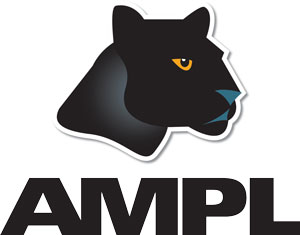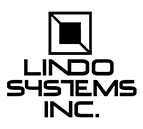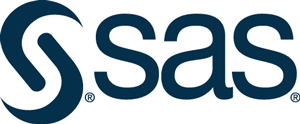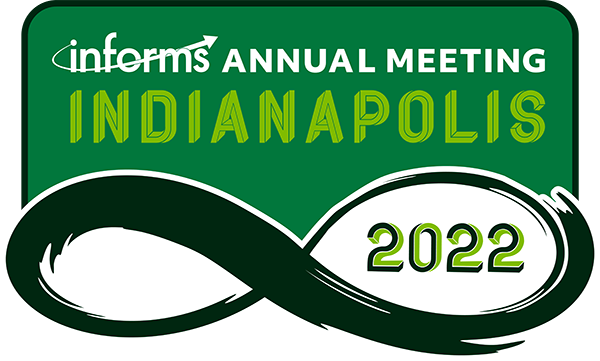Take advantage of these workshops for a hands on demonstration of the latest in the industry. All attendees are welcome to join during the scheduled time or on demand following the conference. Descriptions Below.

AMPL
Adding Optimization to Your Applications, from Prototyping to Deployment: How AMPL is Making It Faster and Easier
Presented by: Robert Fourer
Saturday, October 15, 1-3:30pm
Convention Center – Room 106
Optimization is the most widely adopted technology of Operations Research and Analytics, but also the most challenging to implement:
- How can you prototype an optimization application fast enough to get results before the problem owner loses interest?
- How can you develop optimization-based procedures to get results you can use, within your time and resource requirements?
- How can you integrate optimization into your enterprise’s decision-making systems?
- How can you deploy optimization in modern cloud and container environments?
In this presentation, we show how AMPL gets you going without elaborate training, extra programmers, or premature commitments. We specially highlight new AMPL features that make optimization modeling faster, easier, and more effective than ever.
We start by introducing model-based optimization, the key approach to streamlining the optimization modeling cycle and building successful applications today. Then we demonstrate how AMPL’s design of a language and system for model-based optimization is able to offer exceptional power of expression and speed of execution while maintaining ease of use.
The presentation continues by taking a single example through successive stages of the optimization modeling lifecycle, highlighting recent enhancements:
- Prototyping in an interactive command environment, with a new solver interface that accepts more natural modeling language expressions
- Development of optimization procedures via AMPL’s built-in scripting language and enhanced spreadsheet/database interfaces
- Integration through APIs to widely used programming languages, including Python with new notebook support
- Deployment using new, flexible installation and licensing support
Our example is simple enough for participants to follow its development through the course of this short workshop, yet rich enough to serve as a foundation for appreciating model-based optimization in practice. Several case studies of AMPL applications round out the presentation by showing how model-based optimization has been successful in varied areas of analytics practice.

DecisionBrain
DB Gene: Bring your optimization model to the cloud, create dashboards and connect it with Tableau
Presented by: Patrice Oms and Issam Mazhoud
Saturday, October 15, 1-3:30pm
Convention Center – Room 102
DB Gene is a development platform to easily customize and deploy cost-effective optimization solutions. It helps reduce development time and costs by over 70%.
It allows to quickly create and deploy optimization solutions for business users..
In this workshop, we will leverage a workforce optimization model and we will:
- Deploy it on the cloud
- Import data from excel and edit it in the web UI
- Create an interactive and intuitive data visualization with out-of-the-box web user interface widgets
- Run the model and manage several computation processes in parallel with the tasks server, on-premise, or in the Cloud.
- Compare scenarios and do What-if Analysis
- Create a business reporting dashboards using our new Tableau integration
DB Gene is based on state-of-the-art technologies, easy to find on the market, and allows you to quickly bootstrap an application and make the most of your optimization model.

FICO
Calling all OR Heroes: Learn How to Model and Deploy Solutions in 75% Less Time with FICO® Xpress Insight
Presented by: Jeff Day, Principal Consultant
Saturday, October 15, 4-6:30pm
Convention Center – Room 104
Join our hands-on workshop to experience how FICO® Xpress Insight helps you read data in any format from any source, integrates with your own machine learning and solvers (or Xpress Solver), enables collaboration with business users, deploys decision support or automated solutions in the cloud or on premises —and does it all in 75% less time.
- Get the overview of the great new features of FICO® Xpress Solver, Mosel, Workbench, and Insight
- Learn how you can rapidly deploy Python models with FICO Xpress Insight
- Discover the new View Designer, which reduces GUI development times from minutes to seconds
- Experience real-world business examples in which developers integrate their own solver(s) with the powerful Xpress Insight platform
- See how the flexible, free-to-use Xpress Mosel modeling and programming language allows you to make your solver available to thousands of other Mosel users
All attendees will receive a link to the complimentary FICO® Xpress Optimization Community License.

Frontline Systems Inc.
RASON: The Easier Way to Build, Solve, Deploy and Manage All Your Analytic Models
Presented by: Daniel H. Fylstra, President
Saturday, October 15, 4-6:30pm
Convention Center – Room 106
This workshop will highlight what’s new in RASON® (RESTful Analytic Solver® Object Notation) – our cloud platform for model deployment available “around the clock” since 2015, that manages your full range of analytic models – optimization, simulation, machine learning, and business rules – whether created in a modeling language, in Excel with our Analytic Solver®, or even in other vendors’ software tools using PMML or DMN.
See how easily you can connect models to cloud data sources, use different model types together in multi-stage decision flows (without writing code), schedule automated data updates and model solves, run models “on demand” and access results from low-code / no-code tools like Power Apps, Power Automate and Power BI, and track model versions, runs, and resource usage. And learn how RASON Organization Accounts leverage Azure cyber security features to create a modern “zero trust” solution.
As a bonus, you’ll be among the first to see our new, patent-pending, fully automated risk analysis of machine learning models – easy to use in RASON, in Excel with Analytic Solver, and in C++, C#, Java, Python and R with Solver SDK®. (If you miss this, check our Sunday tutorial!) See if you agree that this will become the new best practice for machine learning model development and evaluation.

Gurobi Optimization
Gurobi 10.0 Helping You to Build, Solve, and Deploy Optimization Models
Presented by: Zonghao Gu, CTO and Co-founder, Ed Klotz, Ph.D, Mathematical Optimization Specialist, Alison Cozad, Ph.D, Optimization Engineer, Lindsay Montanari, Academic Program Director
Saturday, October 15, 4-6:30pm
Convention Center – Room 105
In this workshop, attendees will get a first look at our latest product release, Gurobi 10.0—including exciting performance improvements to Gurobi’s core algorithms. We’ll also highlight features that will make the model-building and solving process easier. To help your model building process, we will share our new Python packages and Gurobipy enhancements that incorporate machine learning into model formulations, improve the matrix API to align with NumPy conventions, and make it even easier to use Pandas with Gurobi. To make your solving process easier, we will show how we’ve enhanced parameter tuning tool and show a tool to identify the source of a model’s numerical problems.
The workshop will also include a panel discussion, with optimization experts across academia, industries, and Gurobi, who will discuss the origins, veracity, and impact of current optimization myths, misconceptions, and imperfect understandings.
We’ll also be presenting a live demo of the Burrito Optimization Game (BurritoOptimizationGame.com), the educational resource that introduces players to the power and capabilities of mathematical optimization.

KNIME
Data Science Life Cycle with KNIME
Presented by: Satoru Hayasaka and Aline Bessa
Saturday, October 15, 1-3:30pm
Convention Center – Room 101
In this workshop, we will introduce KNIME Analytics Platform, an open-source tool for codeless data science. We will present an overview of how KNIME fits into the data science life cycle from data ingestion to model building. This will include a live demonstration of how to use KNIME. We will then present practical use cases of KNIME in various data science projects, such as text processing, time series analysis, and deep learning. We will also showcase deployment of workflows built in KNIME. No background in KNIME is required to follow the topics in this workshop.

LINDO Systems, Inc.
New Releases of LINDO API 14, What’sBest! 18, and LINGO 20
Presented by: Linus Schrage
Saturday, October 15, 1-3:30pm
Convention Center – Room 107
LINDO Systems has just released new versions of the LINDO API callable library, the What’sBest! solver add-in for Excel, and the LINGO modeling language. We will be demonstrating the extensive set of new features found in these three products.
LINDO API 14: New Features
Nonlinear/Global Solver Improvements:
- Ratio objectives, e.g., max (u+v)/(x+y ) solved order of magnitude faster.
- Linearization improvements: More expressions (lots more beyond Max, Min, and Abs) can be automatically linearized, so you can now use a fast linear solver vs a much slower (30x?) nonlinear solver.
- Improved exploitation of QP, Conic, Power, Exponential constraints.
- Indicator constraint support, e.g., z = 0 implies x + y <= 0;
- Problematic functions handled more robustly. In consumer behavior models one encounters Power utility function (x^g-1)/g or Exponential ratio function (exp(g) – 1)/g. LINDO robustly avoids the numerical challenges that occur when g approaches 0.
Linear-Integer solver:
- Improved heuristics for general integer programs.
- Alternative primal/dual optima enumeration for an LP. Successive calls to LSgetNextBestSol() nonredundantly gives successive corner points. Standard solution queries can be used following each call to LSgetNextBestSol.
Interfaces improved for:
- Julia/JuMP.
- Python interface installations now easier via pip (pypi.org)
- Matlab interface has two alternative methods for linear and integer models, LSlinprog and LSintprog, mimicking Matlab’s linprog and intprog.
What’sBest!: New Features
New capability to accept any Excel function in an optimization model as long as the model is either linear are pure binary(possibly nonlinear).
Performance Improvements:
Significantly better handling of “infinite” Excel ranges, where user specifies an unnecessarily large range, e.g., an entire column.
SUMIF and SUMIFS are handled better/faster.
LINGO 20: New Features
Extensive enhancement to the API interface. It is now much easier to integrate your LINGO model into your own custom designed system. There are improved/simplified interfaces for:
- REST API distributed computing interface. If you want to have an optimization based application accessible on the web from smart phones and other devices, this is now easier to do.
- Docker Images are now easier to create. Makes it easier to move an application from one server to another with minimum hassle, Docker has proven to be a popular way of achieving such portability.
- R statistical package interface is now easier/simpler.
- Python package interface is now easier/simpler.
Excel interface is considerably generalized. Much easier to integrate a LINGO model into an Excel spreadsheet. The end user sees it as just a smart Excel spreadsheet that can solve say, a cutting stock problem for metal fabrication, or vehicle routing and delivery problems, or a supply chain shipping assignment problem.

JMP, A SAS Company
No-Code Predictive Modeling in JMP Pro
Presented by: Ross Metusalem, Academic Ambassador
Saturday, October 15, 1-3:30pm
Convention Center – Room 104
JMP Pro is no-code statistics and data science software with advanced capabilities in predictive modeling, data preparation, text mining, interactive graphing, and other areas. Its easy and efficient interface allows users of all skill levels to leverage state-of-the-art tools for model building, validation, visualization, and deployment. In this session, we will work through a predictive modeling case study that demonstrates the use of JMP Pro for:
- Data importing and preparation
- Exploratory data visualization
- Building models with penalized regression, neural nets, boosted trees, and more
- Model cross-validation, comparison, and selection
- Interactively visualizing and exploring model predictions
- Identifying optimal decision thresholds
- Deploying models in Python, SAS, and other languages

Nextmv
Work with decisions as code: An introduction to custom modeling with Nextmv
Presented by: Ryan O’Neil, Ph.D., Tiffany Bogich, Ph.D., and Carolyn Mooney
Saturday, October 15, 4-6:30pm
Convention Center – Room 103
This workshop will provide an overview of the Nextmv decision automation platform for building, testing, and deploying optimization models in Go. We will teach you all of the Go concepts you need to know to start solving optimization problems with the Nextmv CLI and SDK. We’ll talk about custom modeling constructs used, and present several interactive examples of varying complexity and that require different solving paradigms – from a hybrid ALNS – Decision Diagram solver to an open source MIP solver.

Optimization Direct
Solving the Most Difficult Mixed Integer Programming Models with ODH
Presented by: Robert Ashford
Saturday, October 15, 1-3:30pm
Convention Center – Room 103
ODH is a package for accelerating MIP optimization and extending its range. It runs concurrently and synchronously with a MIP optimizer exchanging information with it.
Although ODH was primarily designed to enable MIP optimization to be applied to models too large or difficult to be amenable to the standard commercial MIP optimizers such as CPLEX, Gurobi or other commercial packages, it also accelerates the optimization of most models that are regularly solved with standard MIP.
ODH has been developed by Optimization Direct Inc. over the past 8 years to handle real world customer models for which standard MIP was not effective. On Optimization Direct’s standard hundred model sub-set of mid-sized models taken from its library of nearly 1000 real customer models, ODH|CPLEX and ODH|Gurobi reduce the average optimality gap after two hours to nearly half that found by using the optimizer alone. The set was chosen to be representative rather than amenable to ODH.
On the MIPLIB version 7 open set of 29 models to which no integer feasible solution had been found, ODH|CPLEX found solutions to 5 of them in 2 hours. Of the remaining 257 models to which no optimal solution had been proven, ODH found and proved optimal solutions to 13 of them and found better solutions to any that had been previously found to 45% of them. Again, with runs of just 2 hours.
Optimization Direct has customers in the scheduling, telecoms, retail, logistics and supply chain areas who use ODH. At least three of these have applications that would fail without ODH technology. In January 2022, one said ‘ODH|CPLEX is comparable to the best optimization technology available from anyone on my small models and much superior to any other optimizer on the large ones’.
ODH uses a number of heuristics, especially a novel decomposition based method, and information from a MIP optimizer to feed that MIP optimizer with good solutions. This is made possible by its new thread synchronization technology within which the ODH and MIP threads can work efficiently.

Provalis Research
Saturday, October 15, 4-6:30pm
Convention Center – Room 107
Provalis Research CEO Normand Peladeau will identify the main challenges in the analysis of unstructured text data and demonstrates how Provalis Research’s text analytics software WordStat can help you deal with those challenges and analyze large amounts of text data using exploratory text-mining and quantitative content analysis. He will show you how you can quickly and easily explore very large amounts of text data with advanced topic modeling and other techniques as well as how to build and use dictionaries for automated content analysis.

SAS
SAS Analytics, Digital Twins, and Supply Chains
Presented by: Yan Xu, R&D Director, Rob Pratt, Senior R&D Manager, Damian Herrick, Principal Data Scientist, and Bahar Biller, Principal Operations Research Specialist
Saturday, October 15, 1-3:30pm
Convention Center – Room 105
SAS offers extensive analytic capabilities, including machine learning, deep learning, natural language processing, statistical analysis, optimization, and simulation. SAS analytic functionality is also available through the open, cloud-enabled design of SAS® Viya®. You can program in SAS or in other languages – Python, Lua, Java, and R. SAS Analytics is equipped with AI-enabled automations and modern low-code or no-code user interfaces that democratize data science usage in your organization and offer unparalleled speed to value.
We’ll first review the SAS analytics portfolio, then highlight recently added optimization features, and finally explore case studies in optimization, network analytics, and simulation, with an emphasis on projects involving digital twins and supply chains. The concept of digital twin plays a paramount role in the digital transformation efforts of our customers. We will describe how we envision digital twins, share our development framework, and highlight SAS enabling technologies and differentiators. We will further share our experience of building supply chain digital twins and conclude with an overview of SAS customer outcomes.

Taipy
The Next Generation Python Application Builder
Presented by: Martin Shell
Saturday, October 15, 4-6:30pm
Convention Center – Room 101
This workshop will present an end-to-end view of Taipy, a Python framework for building production-grade web applications designed to bring the value of complex analytics to the end-user.
Members of the OR community are typically trained in the theory and practice of developing and applying complex algorithms to the solution of organizational problems. Too frequently the results of these efforts are not used to their full potential. The critical piece is the transformation of these models into applications that can be leveraged by business users. The gap is frequently the challenge of collaboration between data scientists and IT professionals.
Taipy consists of two key components: Taipy GUI and Taipy Core. Each of these is designed to contribute to the creation of high-performance highly responsive interactive applications with a minimum of coding, allowing data scientists to deliver applications for end-users, rather than raw algorithms.
This workshop will provide an overview of both components of Taipy, demonstrating the creation of a full application from start to finish. We will also present some examples of successful projects completed by customers. Attendees with basic knowledge of Python will leave with the ability to build applications using the open source release of Taipy.

University of Arkansas
Analytics in the Classroom: A Hands-on Approach
Presented by: Ron Freeze, Director of Enterprise Systems, Sam M. Walton College of Business
Saturday, October 15, 4-6:30pm
Convention Center – Room 102
The University of Arkansas would like to invite you to this workshop that will provide faculty participants with hands-on training in the SAS Viya analytics applications. These exercises focus on the use of data analytics and big data. The workshop will focus on connecting directly from SAS Viya to the Dillards data set that resides on the Teradata Intelliflex platform at the University of Arkansas. The data set used is updated weekly by Dillards and allows predictive analytics along with machine learning (and other analytic techniques) to be tested and validated in real time during the semester. All materials and resources demonstrated at the workshop are available free of charge to the participants and the students in their courses.

